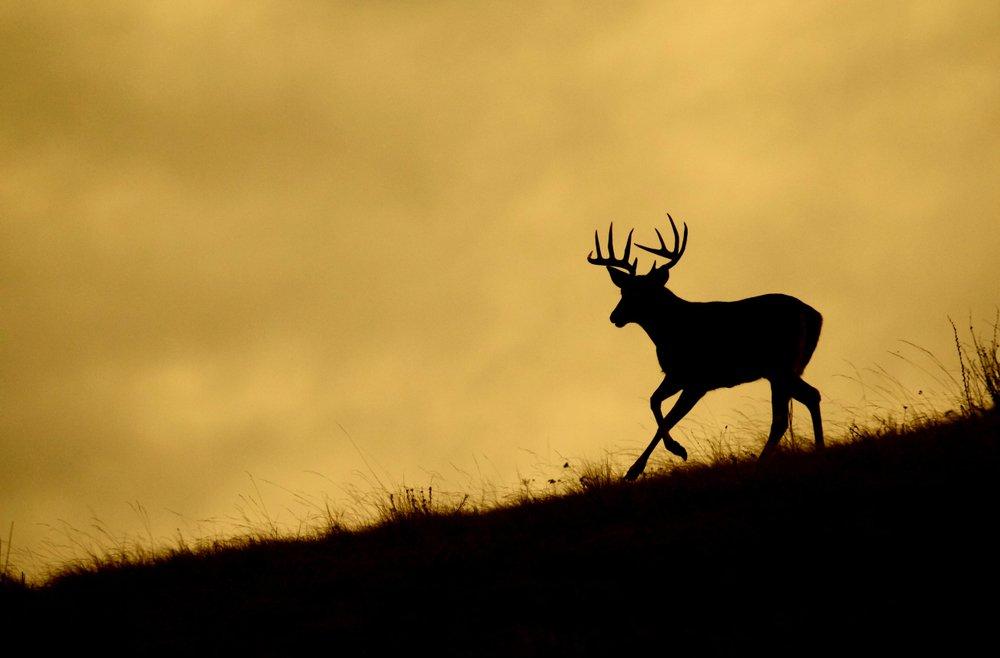Most All Bucks Move At Least a Little During Daylight
You hear it every season.
Yeah, I've got a ton of pictures of him but they're all at night. He's nocturnal. Won't be killing that big guy.
Insert sigh here.
I might catch a little flack for saying this — but there's no such thing as a nocturnal buck. Sure, all deer are different, and each buck has its own personality. That's true. Each individual buck you encounter is inclined to move more or less during daylight. Also true. But one thing remains — all bucks move at least a little during daylight hours. You just have to know when and where they do so to capitalize on it.
It's also important to remember that deer movement is relative and is greatly influenced by habitat, pressure, food sources and other factors. For the most part, I consider the whole nocturnal deal to be oversold. But there's a twist. There are some days that mature bucks won't move outside of their bedding area during daylight. I do believe that. But I think the vast majority of bucks will move significant distances in daylight (outside of the rut) when conditions are right. And I also believe virtually all bucks move at least short distances from their beds during daylight, even on the worst days.
In most cases, a buck only seems nocturnal because of three reasons.
The first — you aren't close enough to the buck's core area. If you're sitting 500 or 600 yards from the buck's bed, chances are you won't see the deer. You have to be closer to a given buck's bedding area to have a shot at seeing it in daylight.
The second possibility is that you aren't on a preferred travel route. You might be really close to the deer's bed, but if you aren't on its preferred trail(s), you aren't seeing that deer in daylight very often. And while you aren't seeing that deer in daylight, it likely is moving in daylight somewhere else nearby. It's that simple. Knowing where the deer is bedding is part of the battle. Homing in on the travel routes it uses is the next phase.
The third possibility is the closest a buck gets to being a nocturnal buck (as people often describe them). It's a buck that moves very little distance from its bed of an afternoon. To kill this deer, you have to get within 100 yards or so of its actual bed (not just the bedding area). Or, you have to hope it moves a little further in daylight during a cold front, weather event or the rut.
Regardless of which of these scenarios you find yourself in, the best way to increase your odds of killing a particular deer is to determine where its primary bed is located. You have to know where they spend daylight hours to see them during daylight hours. Sure, you might get lucky and catch one out in the open. But that rarely happens. And the deer hunters who kill mature bucks on a consistent basis are getting back in the thick stuff with the deer more times than not.
Interestingly enough, studies show that most bucks will get up and feed twice during the day. That said, said feeding activity typically occurs within 80 to 100 yards of where that deer lays down — especially if mast-bearing trees are nearby. If you know where that is, and you're able to close the distance without being detected, you have a chance at killing even the most reclusive buck in the woods. If the deer doesn't see, hear or smell you as you ease into position, and the buck thinks the conditions are right for it to move your way in daylight, odds increase greatly.
All bucks are killable. And few (if any) are truly nocturnal in the traditional sense we hunters often throw around.
Some just take a little more effort than others to get that tag on them.
Don't Miss: How Mature Bucks Use the Wind
Are you a deer hunter wanting to learn how to accomplish your goals? Check out our stories, videos and hard-hitting how-to's on deer hunting.








